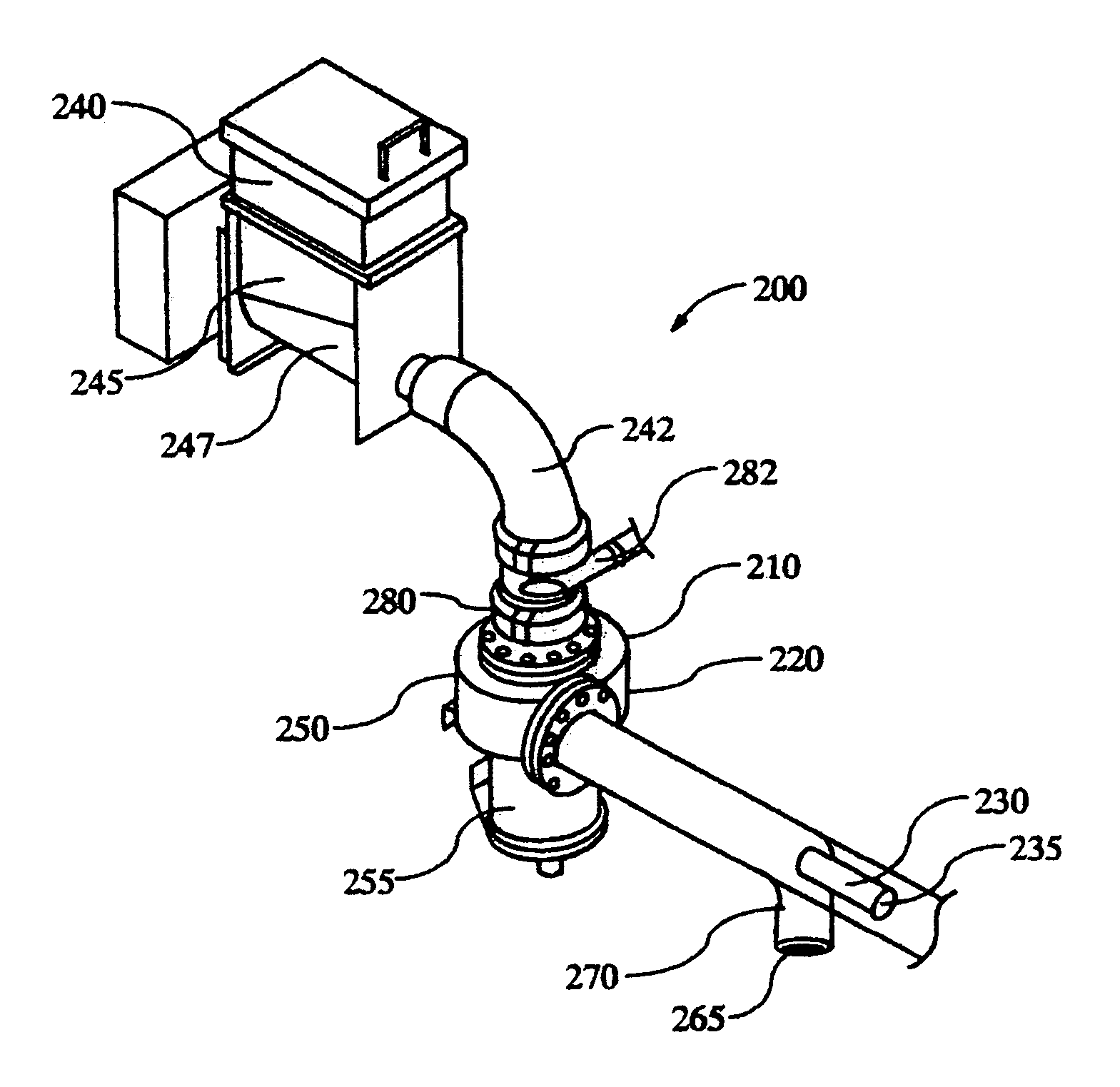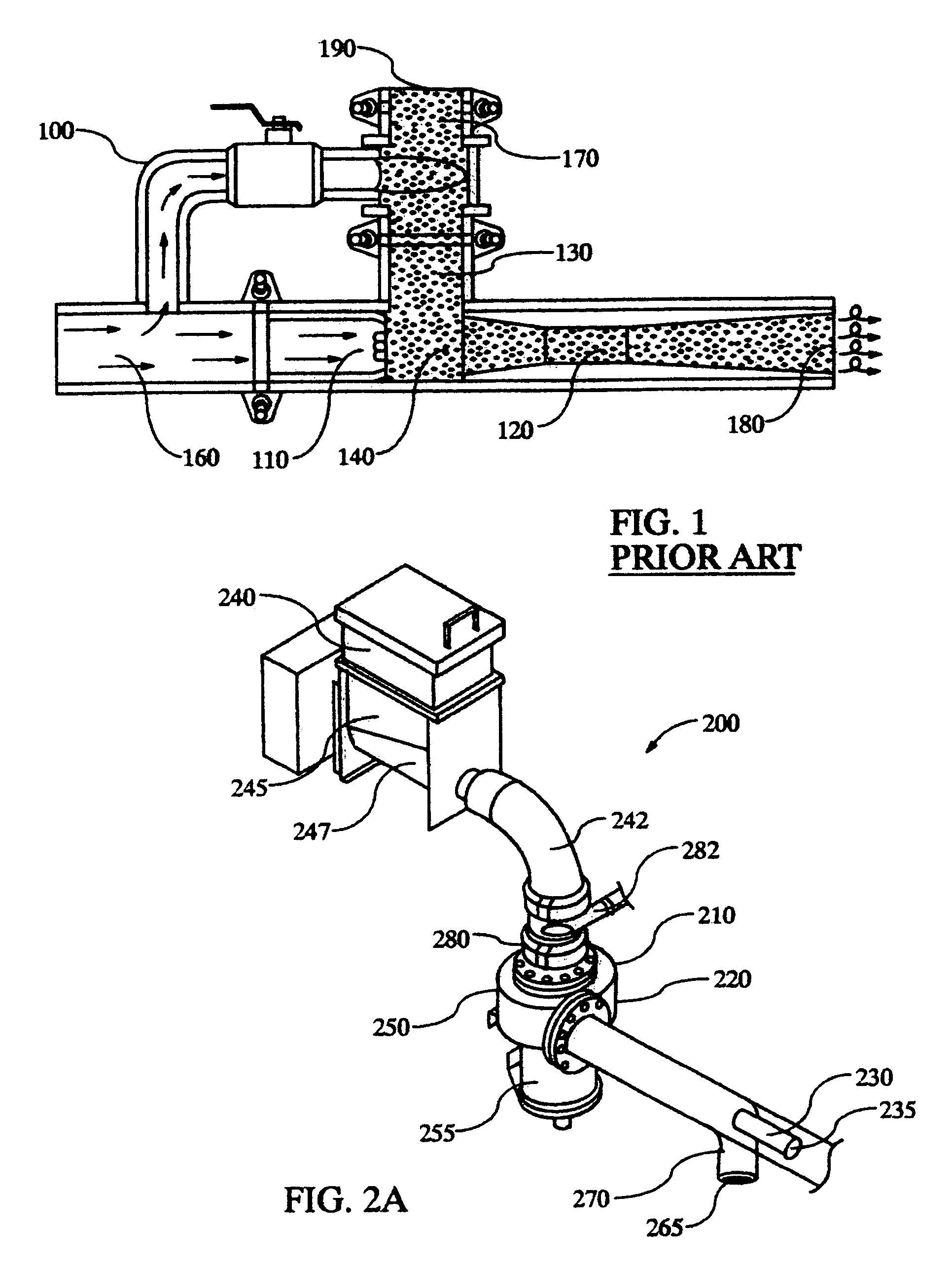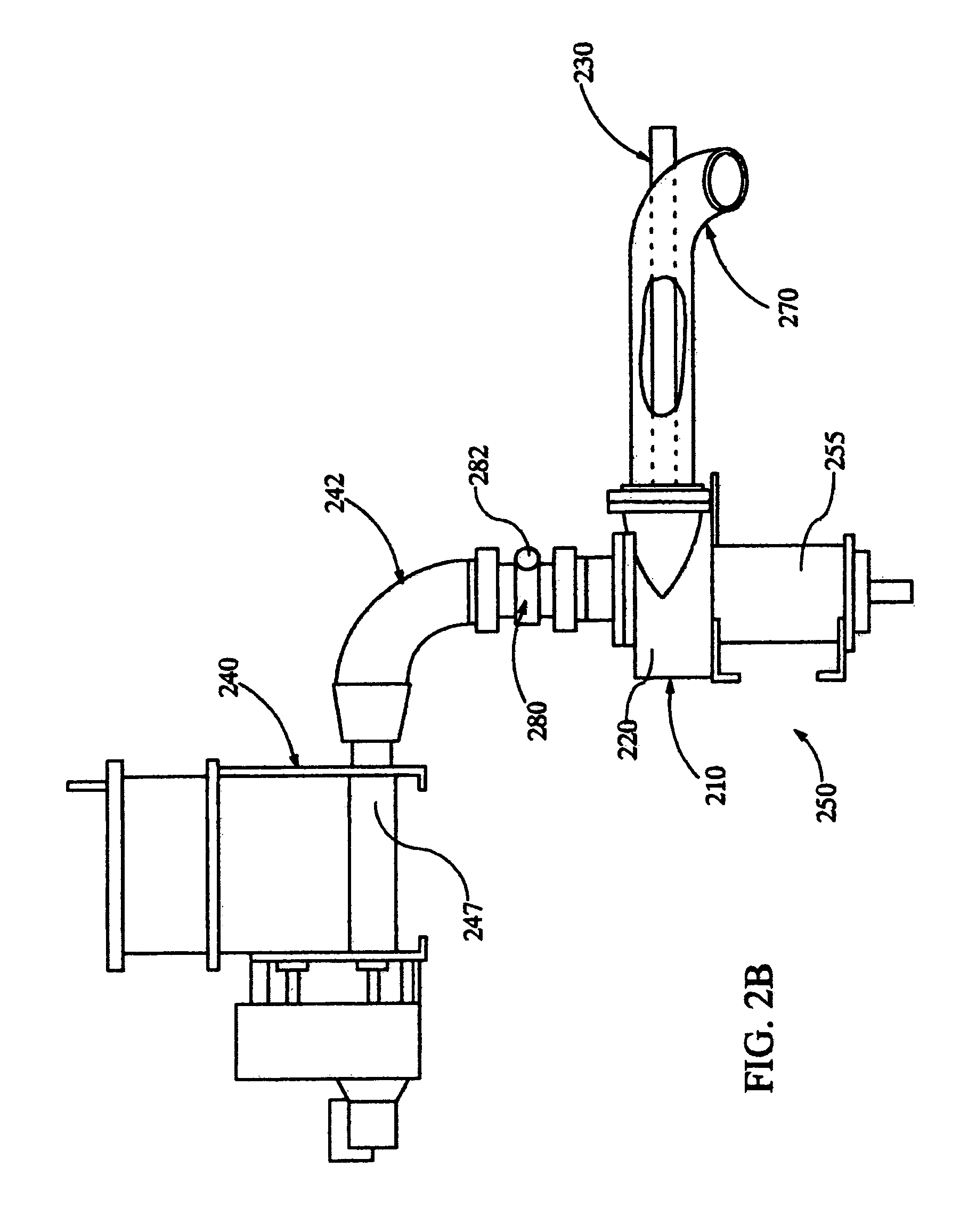Method and apparatus for hydrating a gel for use in a subterranean formation
a technology of subterranean formation and gel, which is applied in the directions of vibration devices, transportation and packaging, and well accessories, etc., can solve the problems of affecting the efficiency of the mixing process, and affecting the effect of the hydrating
- Summary
- Abstract
- Description
- Claims
- Application Information
AI Technical Summary
Benefits of technology
Problems solved by technology
Method used
Image
Examples
Embodiment Construction
[0021]The present invention is useful to produce a gel fluid mix for use in fracturing a subterranean formation, while avoiding the formation of gel balls and fish eyes. In the prior art, because gels have a fixed hydration rate at a given temperature, the gels were unable to be thoroughly mixed without the use of materials to slow the gel hydration rate to allow sufficient time for the gel particle dispersion and prevent gel ball or fish eye formation. As mentioned above, such materials include surfactants, suspension agents, liquid gel concentrates, and hydration-delaying coatings. In the present invention, it is possible to use a non-coated (non-surface-treated) particulated gelling agent to form a gel fluid mix. This provides a simpler and less expensive process, and the materials themselves are also cheaper because raw gelling agents are less expensive than coated or treated materials.
[0022]The present inventions are described by references to drawings showing one or more examp...
PUM
| Property | Measurement | Unit |
|---|---|---|
| temperature | aaaaa | aaaaa |
| temperature | aaaaa | aaaaa |
| gravity | aaaaa | aaaaa |
Abstract
Description
Claims
Application Information
 Login to View More
Login to View More - R&D
- Intellectual Property
- Life Sciences
- Materials
- Tech Scout
- Unparalleled Data Quality
- Higher Quality Content
- 60% Fewer Hallucinations
Browse by: Latest US Patents, China's latest patents, Technical Efficacy Thesaurus, Application Domain, Technology Topic, Popular Technical Reports.
© 2025 PatSnap. All rights reserved.Legal|Privacy policy|Modern Slavery Act Transparency Statement|Sitemap|About US| Contact US: help@patsnap.com



